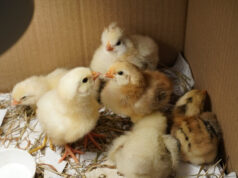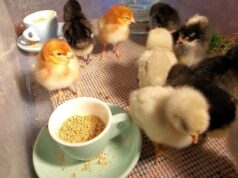When it comes to raising chicks, ensuring their environment is just right is crucial. A significant concern for many poultry enthusiasts is the problem of overheating chicks in brooder. This issue can be detrimental to the well-being of your flock. Let’s explore how you can avoid this pitfall and ensure the safety and comfort of your young birds.
The issue of overheating is more common than you might think and can occur when precautions aren’t taken in setting up the brooder environment. While a warm space is essential for young chicks, too much heat can be just as dangerous as not enough. An ideal brooder mimics the conditions a mother hen would provide, keeping them warm but not stifling.

Understanding the Dangers of Overheating
Heat stress in chicks can lead to severe consequences, including dehydration, growth stunting, and even mortality. Recognizing the signs early can make a huge difference in the survival and happiness of your flock. Symptoms of overheating include panting, spreading wings away from the body, and lethargy.
Optimal Brooder Temperature
The key is to maintain the right temperature that allows the chicks to thrive. Typically, the first week of a chick’s life requires a temperature around 95F, decreasing by 5F weekly until they are fully feathered. This gradual reduction helps in acclimatizing them to the ambient conditions.
Tools for Temperature Regulation
Invest in a reliable thermometer to consistently monitor the brooder’s temperature. Position the heat source, such as a heat lamp, in a way that one side of the brooder is warmer than the other. This provides a gradient for the chicks to self-regulate their body temperature by moving to a more comfortable area as needed.
An informative resource to help you set up your brooder correctly is How to set up a chick brooder.
Designing the Perfect Brooder
A proper setup goes a long way in preventing overheating. Use of materials that do not retain excess heat, adequate ventilation, and ensuring a large enough space for each chick are all critical elements.
Signs Your Chicks Are Too Hot
Keep a close eye for behavioral cues such as open-mouthed panting, chicks crowding on the brooder’s edges far from the heat source, or chicks being overly still and lying spread out. These signs suggest it’s time to adjust the temperature.
Preventing Overheating
Adjustable Heat Source
Using an adjustable heat source allows you to make fine-tuned changes to the temperature. This flexibility can be crucial during unexpectedly warm days.
Continuous Monitoring
Regular monitoring is key. If you do not yet have a system for observing the temperature during different times of the day, consider setting one up to make immediate adjustments.
What If Your Chicks Do Overheat?
If you suspect your chicks are overheating, immediate steps should be taken to cool them down. Increase ventilation, provide cool water, and remove the heat source until they seem more comfortable.
For a detailed checklist to ensure the welfare of your chicks, check out this helpful chick brooder checklist.
The Brooder’s Physical Setup
Besides temperature control, the physical layout of the brooder can have a role to play. Ensure that there are no obstructions that may lead to unnecessary accumulation of heat at a particular spot.
Brooder Materials
Materials like cardboard may be fine in colder conditions but can trap heat in warm climates. Alternatively, materials such as hardware cloth provide airflow, helping to balance overall temperature better.
Conclusion
The health and well-being of your chicks largely depend on a balanced brooder environment. By being vigilant and adhering to best practices, you can prevent overheating and raise healthy, happy chicks. For further resources on chick care, consider checking out this guide from Purina Mills.

Faq
What is the ideal temperature for a chick brooder?
The ideal temperature starts at 95F during the first week and should be decreased by 5F each subsequent week until the chicks are feathered.
How can I tell if the chicks are too hot?
Signs of overheating include panting, wings held away from the body, and chicks moving to the brooders cooler areas.
Can a brooder be too ventilated?
Too much ventilation can result in drafts, which might chill the chicks. Balance is key, where there’s good airflow without creating cold spots.
This article contains affiliate links. We may earn a commission at no extra cost to you.











